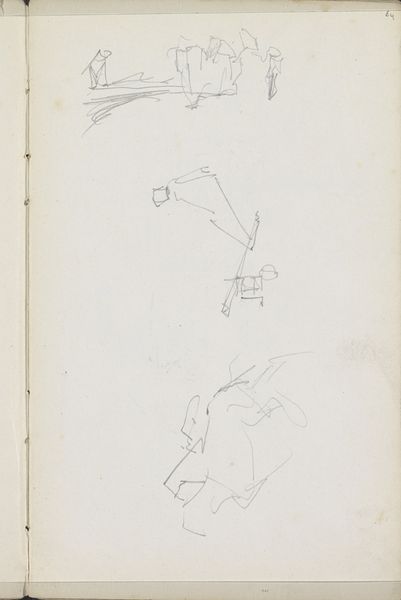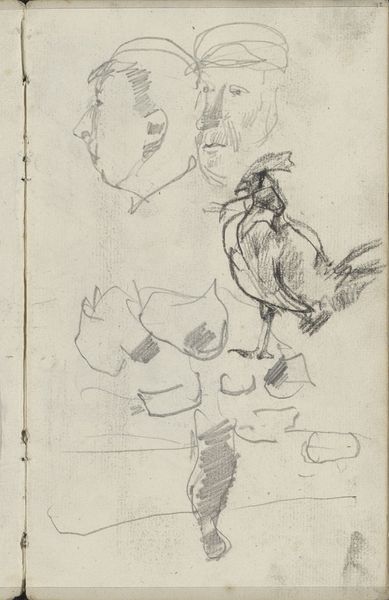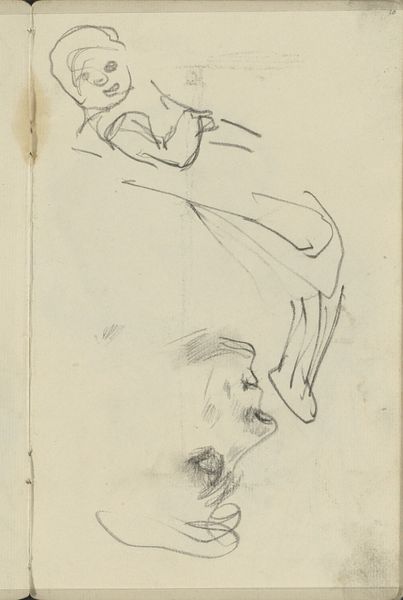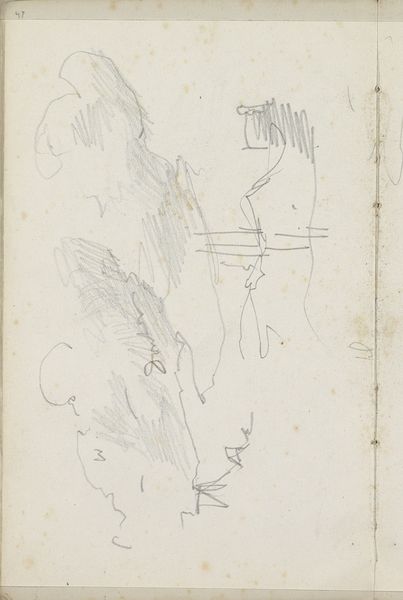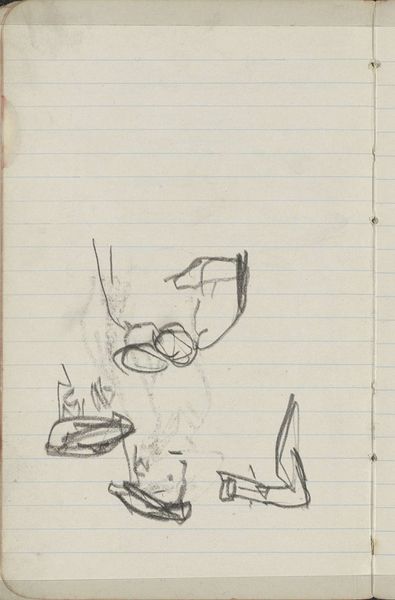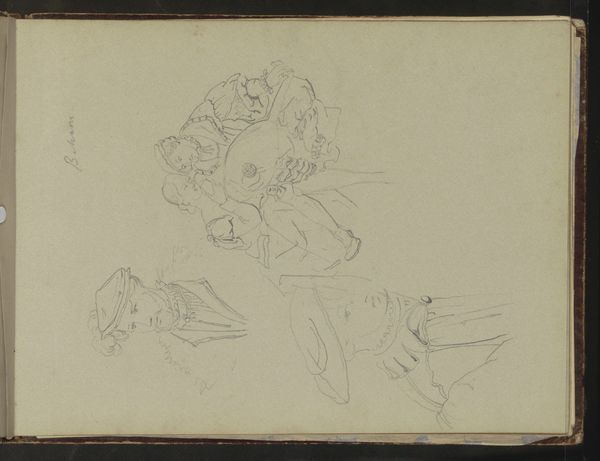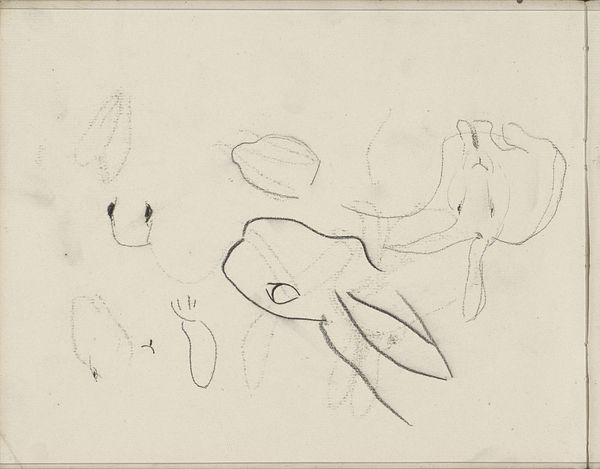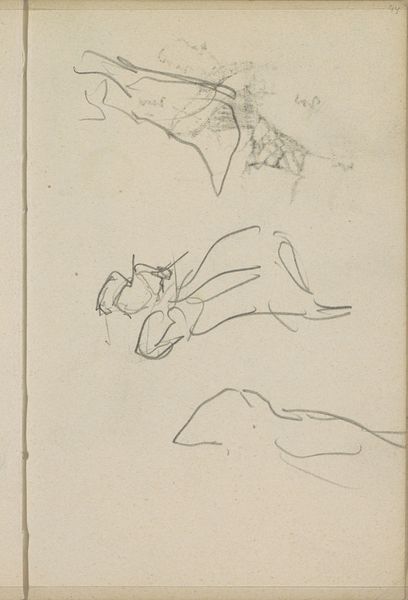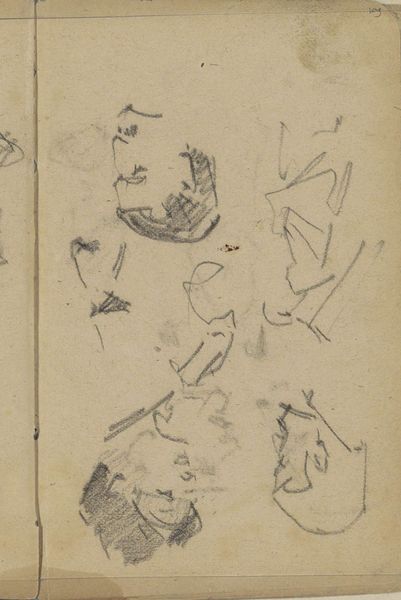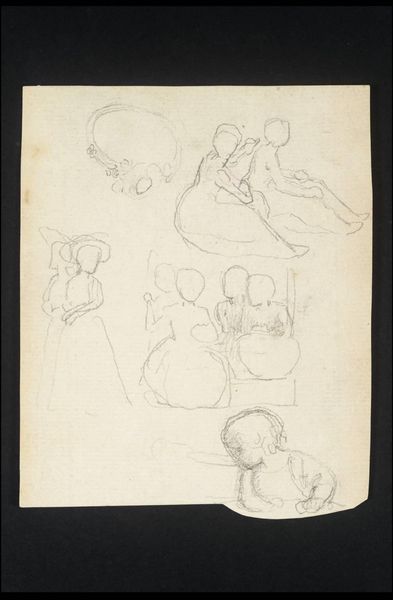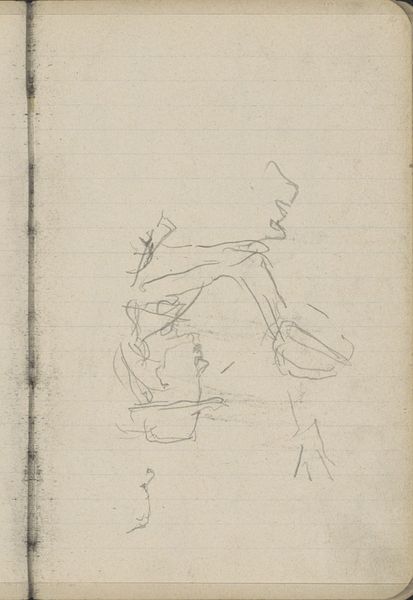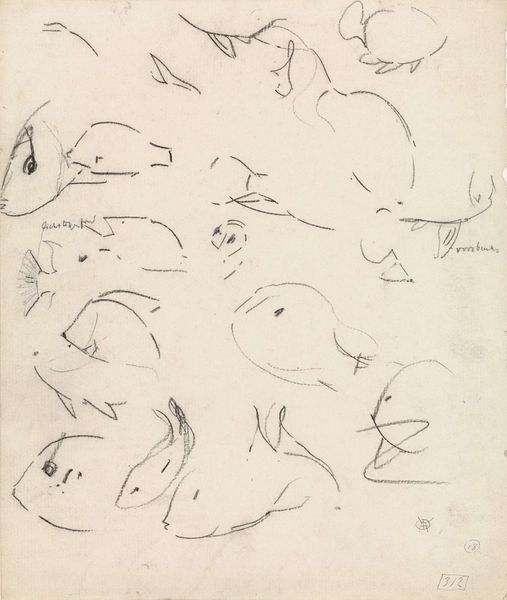
Copyright: Rijks Museum: Open Domain
Curator: Welcome. Today we're looking at Willem Bastiaan Tholen's "Mannen, in verschillende houdingen," a graphite drawing created sometime between 1900 and 1931 and held in the Rijksmuseum. Editor: My first impression is one of capturing transient moments. It feels like peeking into a sketchbook where Tholen swiftly noted postures and attitudes, but also states of rest, with the ambiguous poses allowing the viewer to come to their own conclusion. Curator: Indeed. These figures, rendered with the quick, flowing lines characteristic of impressionistic sketches, hint at a deeper symbolism. Notice the repeated motif of figures in repose; lying down, sitting, or with their heads bowed. It brings to mind the imagery of laborers or perhaps even mourning. Editor: The element of capturing vulnerable moments in time strikes me in that context; they appear timeless as resting but, as such, in precarious or transitional states. Curator: Precisely! There’s a psychological weight to that imagery, where rest becomes part of the constant social labor one has to assume as their destiny; even in private one may continue in the mindset that rules all waking life. Moreover, we must consider how class and labor, for instance, play a part into shaping that constant element. Editor: Right. So, beyond the visual observation of resting persons, Tholen gives a sense of timeless quality to a subject still crucial and important today. Who is granted leisure and on what conditions? How can our shared vulnerability turn to our favor when reflecting about collective action and organization? Curator: Tholen invites contemplation on those very social structures and power dynamics. His rapid style belies the image's emotional depth that these resting poses acquire and embody within the space of work but beyond the act of labor. The cyclical and emotional charge that the symbolism around the work is deeply meaningful in psychological, cultural and political spaces, allowing us a renewed view of historical memory. Editor: Absolutely. It's a subtle yet potent reminder that even sketches can be powerful tools for engaging with history, memory, and the ongoing struggles for more egalitarian conditions in daily living and labor relations.
Comments
No comments
Be the first to comment and join the conversation on the ultimate creative platform.
